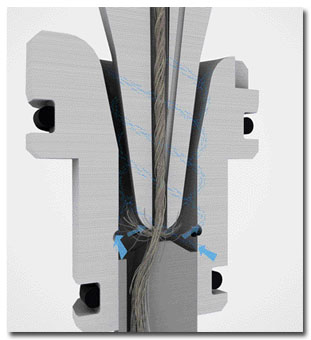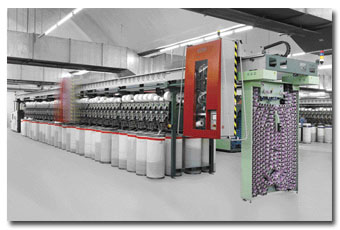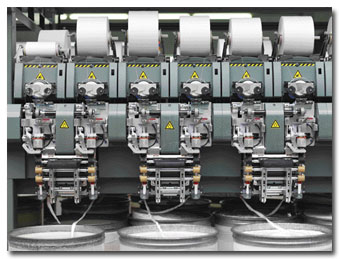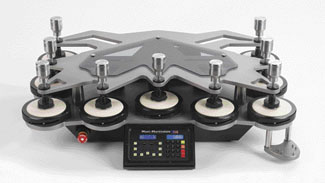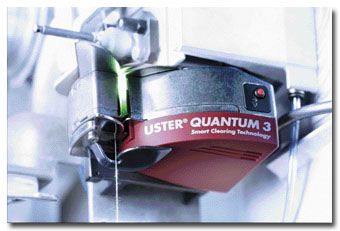The third edition of the biennial exhibition ITMA Asia + CITME will welcome the global textile
industry June 12-16, 2012, to the Shanghai New International Expo Centre (SNIEC) in Shanghai’s
Pudong district. Recognized as the largest international textile machinery showcase in Asia, the
show combines two previously independently produced events — the International Textile Machinery
Exhibition (ITMA) Asia and the China International Textile Machinery Exhibition (CITME) — in an
effort to more effectively promote textile machinery and technology in Asia and strengthen
cooperation between international textile and textile machinery industries.
The event’s owners — the European Committee of Textile Machinery Manufacturers (CEMATEX); the
Sub-Council of Textile Industry, China Council for the Promotion of International Trade
(CCPIT-TEX); China Textile Machinery Association (CTMA); and China International Exhibition Center
Group Corp. (CIEC) — have once again selected the Beijing Textile Machinery International
Exhibition Co. Ltd. (BJITME) and co-organizer MP International Pte Ltd to organize the event. The
Japan Textile Machinery Association (JTMA) also is a partner organization involved in the event.
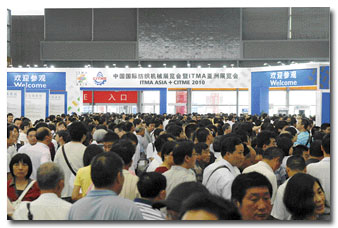
ITMA Asia + CITME 2010 welcomed 82,000 visitors to see the products and services of 1,171
exhibitors.
“Having held two successful presentations of the ITMA Asia + CITME combined show in 2008 and
2010, we are confident that the upcoming exhibition will create enhanced and new marketing and
networking opportunities for both Chinese and international textile and textile machinery
manufacturers, especially those offering eco-friendly solutions,” said Stephen Combes, president,
CEMATEX. “The combined show has been highly recognised by leading textile and textile machinery
industry players as it offers them a cost-effective showcase for their products and services in
Asia. With the recovery of the world economy and the beginning of China’s 12th Five-Year Plan, we
are confident that the combined show will score another success.”
Exhibitors And Visitors
ITMA Asia + CITME 2010 saw 1,171 exhibitors from 28 countries and regions — the greatest
number of which came from China, Germany, Italy, Taiwan and Japan; and 82,000 visitors from 99
countries and regions. The greatest number of overseas visitors came from India, Japan, Taiwan,
Thailand and Korea. More than 20 percent of visitors were from overseas.
Show organizers expect more than 1,300 companies from approximately 30 economies will exhibit
at the 2012 edition, filling approximately 130,000 square meters of floor space in 11 halls at
SNIEC. As of Textile World’s press time, more than 100 prospective exhibitors are on the wait list.
Chinese companies have reserved nearly 50 percent of the available exhibit space. Companies
from Germany, Italy, Switzerland and Japan form the next-largest exhibitor group. Spinning will be
the most strongly represented sector at the show, followed by knitting, dyeing and finishing,
weaving, and winding.
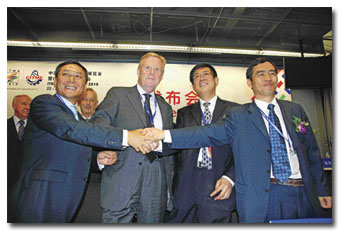
(left to right) ITMA Asia + CITME 2010 Supervisory Committee members Xu Yingxin, A.E.
Roberts, Wang Shutian and He Cailong
Show organizers expect nearly 100,000 visitors from all sectors of the global textile
industry to attend ITMA Asia + CITME 2012. To ensure high-quality visitors, guests will be required
to pay a small fee for an entry badge. Visitors may select a five-day pass for 100 renminbi or a
single-day pass for 50 renminbi. Both passes are available at a 40-percent discount if guests
register online prior to June 8. Visitors registering online also will be able to print a badge
prior to the show.
“The combined show is now well entrenched in the textile machinery exhibition calendar,” said
Maria Avery, secretary general, CEMATEX. “It draws leading textile machinery manufacturers and is a
must-attend showcase for the Asian market, offering plenty of business and networking
opportunities.”
Product Categories
Products will be arranged into 17 chapters as follows:
- Chapter 1 – Machinery for spinning preparation, man-made fiber production and spinning; and
auxiliary machinery and accessories; - Chapter 2 – Machinery for winding, texturing and twisting; and auxiliary machinery and
accessories; - Chapter 3 – Machinery for web formation, bonding and finishing of nonwovens and felting; and
auxiliary machinery and accessories; - Chapter 4 – Machinery for weaving preparation, weaving and tufting machinery; and auxiliary
machinery and accessories; - Chapter 5 – Knitting and hosiery machinery, auxiliary machinery and accessories;
- Chapter 6 – Embroidery machinery, auxiliary machinery and accessories;
- Chapter 7 – Braiding machinery and accessories;
- Chapter 8 – Machinery for washing, bleaching, dyeing, printing, drying, finishing, cutting,
rolling and folding; and auxiliary machinery and accessories; - Chapter 9 – Garment-making machinery, other textile processing machinery, auxiliary machinery
and accessories; - Chapter 10 – Laboratory testing and measuring equipment and accessories;
- Chapter 11 – Transport, handling, logistics, storing and packing equipment and
accessories; - Chapter 12 – Equipment for recycling, waste reduction, and pollution prevention; and
accessories; - Chapter 13 – Software for design, data monitoring, processing and integrated production;
- Chapter 14 – Dyestuffs and chemical products for the textile industry;
- Chapter 15 – Equipment and products to ensure machinery and plant operations;
- Chapter 16 – Services for the textile industry; and
- Chapter 17 – Research and educational institutions.
ITMA Asia + CITME 2012 organizers affirm that intellectual property (IPR) infringements will
not be tolerated, and stringent regulations will be enforced. An active IPR office again will be
available onsite to assist exhibitors who have suspected patent issues. Exhibitors may photograph
and film their own stands but are prohibited from photographing and filming other exhibitor’s
stands.
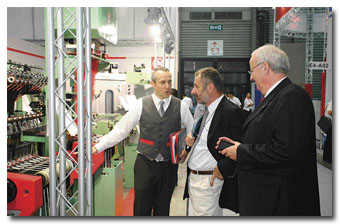
Blaise Godet, Switzerland’s ambassador to China (center), and Christian Kuoni, CEO, Jakob
Müller AG, and president, SWISSMEM Textile Machinery Division (right), at Jakob Müller’s booth at
ITMA Asia + CITME 2010
Growing Machinery Market
According to San Jose, Calif.-based market research firm Global Industry Analysts Inc., the
global textile machinery market is predicted to reach US$20.75 billion by 2015, with the Asia
Pacific region comprising the largest market.
The 2010 International Textile Machinery Shipment Statistics from The International Textile
Manufacturers Federation (ITMF), Switzerland, indicate that global machinery demand is on the
upswing, and that significant investments have been made in short-staple spindles, open-end rotors,
texturing spindles, shuttleless looms, circular knitting machines and electronic flat knitting
machines.
“Currently, the textile machinery industry report card is looking much better compared to the
previous two years,” said CEMATEX Board Member Fritz Mayer. “[ITMF’s statistics] show that
investments, which were reduced during the 2008 crisis, have picked up significantly. In fact, I’ve
been told that a number of machinery manufacturers have full order books, with delivery times, in
some cases, of up to two years.
“As the global economy continues to show strong signs of recovery, we expect our 2012 edition
to be even bigger than the previous showcase in 2010,” he added.
For more information about ITMA Asia + CITME 2012, visit
itmaasia.com.
March/April 2012

